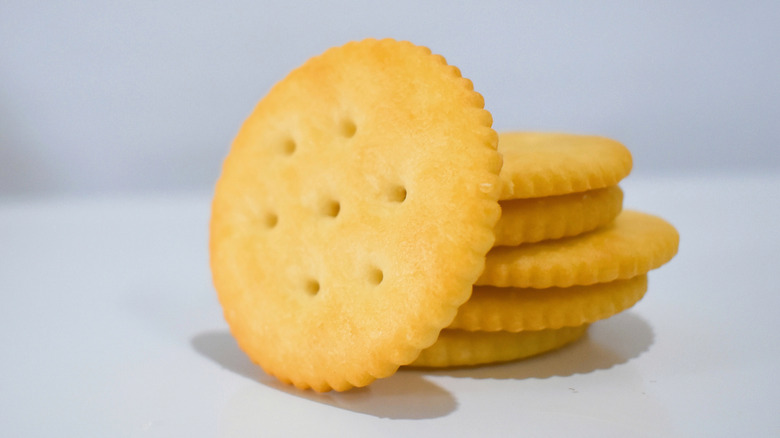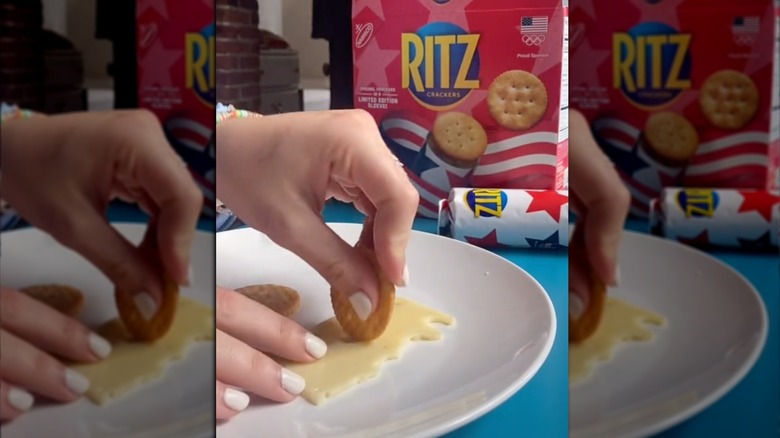TikTok Can't Believe This Official Ritz Cracker Reveal
We're guessing we may be going out on a limb here, but we reckon there are a few among us who have stared down a Ritz cracker before devouring it. Perhaps you've wondered why the treat is round and how it got those iconic scalloped edges. Well, even if you have never spared a thought for the cracker's serrated edges until now, Ritz's social media handlers have taken the initiative to explain why.
In a recent TikTok post, Ritz rhetorically asks "what people think the edges on Ritz Crackers are for" and throws out answers like "so pretty" and "aesthetic." The company then proceeds to answer its own question, saying the edges are meant to be cutting cheese — along with a video demonstration of how to use the cracker to slice a piece of cheese in half before putting it between two crackers. Since it was uploaded, the short video has been liked nearly by nearly 300,000 followers and racked up more than a million views (via Indy100).
Ritz fans questioned the truth of the social media post
Ritz Crackers first made their debut at the U.S. Patent and Trademark Office on November 1, 1934, in an application filed by the National Biscuit Company (which we now know as "Nabisco") (via Food Timeline). But its origins may have gone back even further — to 1801, to be precise — which is when a sea captain named John Bent adapted a hardtack biscuit by adding a rising agent to it until it became crisp and appealing. The recipe underwent several iterations, which then included the scalloped edges, until the Nabisco product itself was perfected. Its name was then picked by a Nabisco employee, Sydney Stern, who also designed the box, per Snack History. Given that the biscuit was launched around the Depression years and called "Ritz" to make them seem aspirational, it could be a stretch to imagine those scalloped edges being of any practical use.
In any case, the post got TikTok's attention with skeptical fans coming forward to question the cracker's piece of trivia. "It won't work, they break too easily," one follower said. Another told the brand they weren't buying the explanation, saying: "That's not what they're for. You just made that up," (via The Sun).
In any case, the video did what we think it was meant to do — which was to get people talking about the popular snack.

